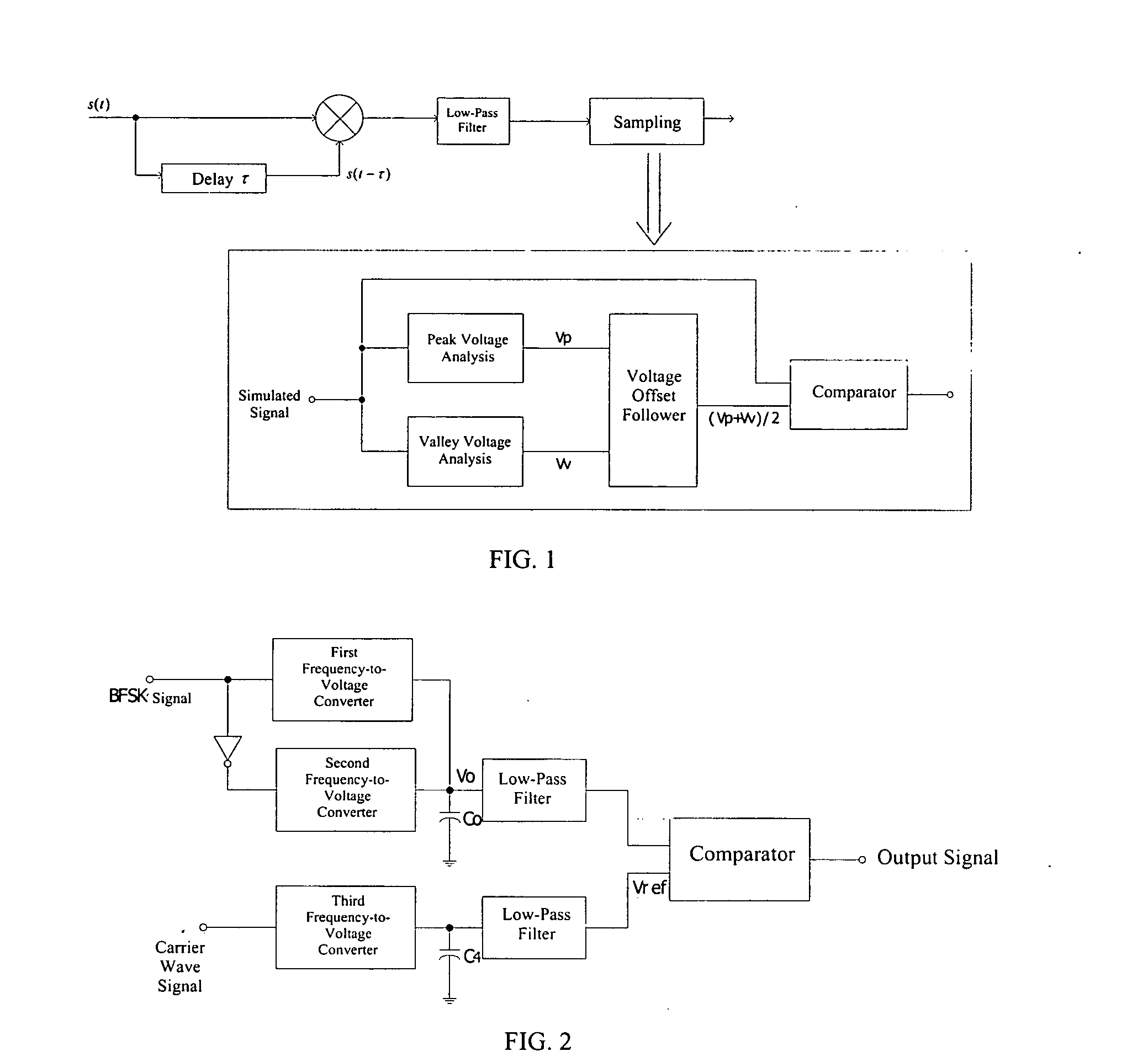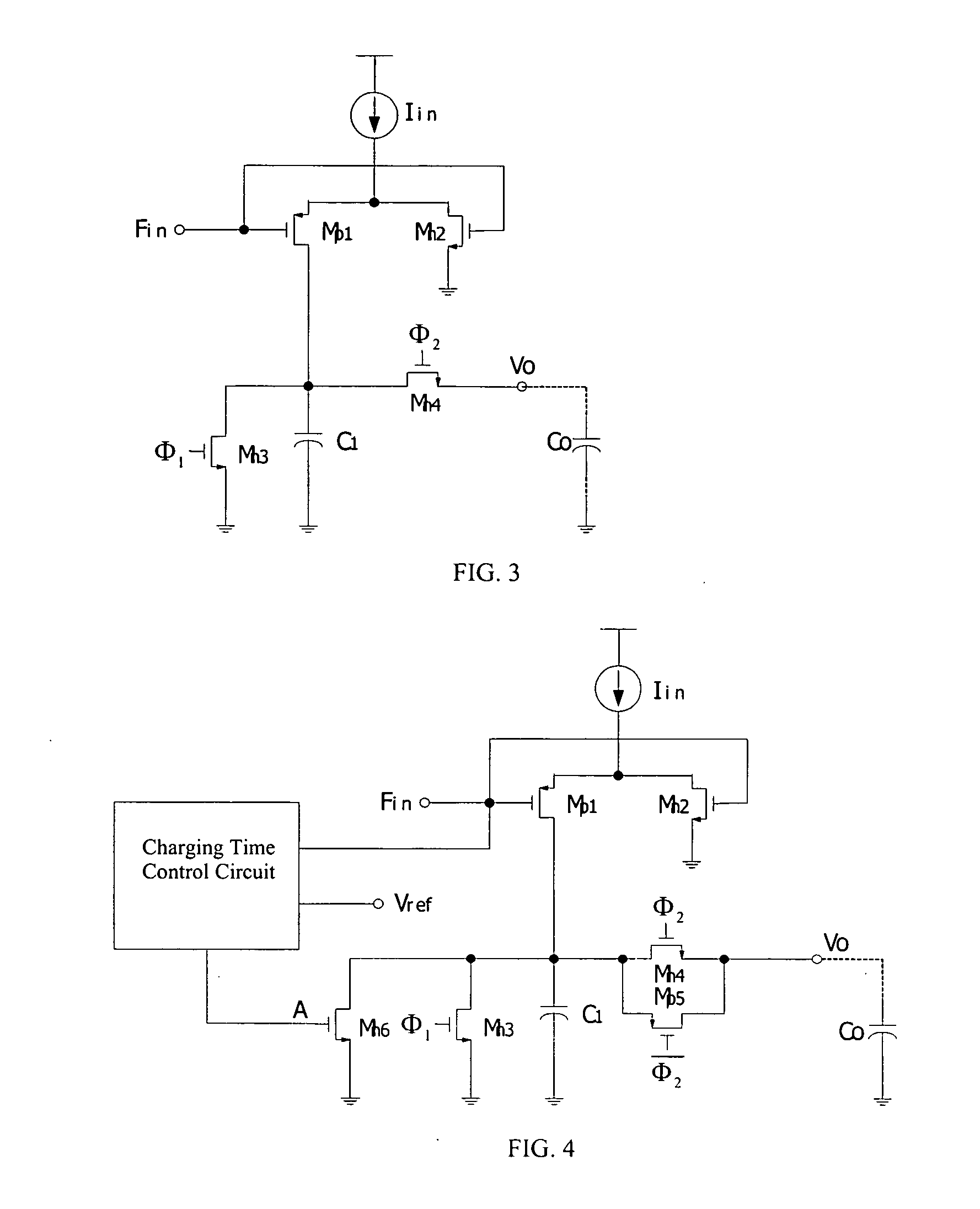Binary frequency-shift keying demodulator and frequency-to-voltage converter
a demodulator and frequency-to-voltage converter technology, applied in the field of wireless communication receiver devices, can solve the problems of power consumption, special difficulty in implementation, and the addition of an external phase-shifting circuit, etc., and achieve the effects of reducing power consumption rate, simple circuit board design, and reducing charge injection
- Summary
- Abstract
- Description
- Claims
- Application Information
AI Technical Summary
Benefits of technology
Problems solved by technology
Method used
Image
Examples
Embodiment Construction
[0019] As is seen in FIG. 2, the present invention provides a BFSK demodulator comprising a three-channel frequency-to-voltage converter. Frequency-to-voltage converter converts a frequency signal into a voltage signal. A BFSK information signal is input into the first-channel frequency-to-voltage converter and a converted BFSK information signal is input the second-channel frequency-to-voltage converter. The outputs of first and second channel frequency-to-voltage converter are connected with a capacitor Co, whereas the other end of the capacitor Co is connected to the ground. A voltage signal Vo is produced by the first and second frequency-to-voltage converters and the capacitor. The voltage signal Vo becomes the positive input to the comparator after high frequency noise filtering through a first low-pass filter. Converting the BFSK information signal and using the same frequency-to-voltage circuits are to rearrange electron more frequent. Therefore charges are conducted on capa...
PUM
 Login to View More
Login to View More Abstract
Description
Claims
Application Information
 Login to View More
Login to View More - R&D
- Intellectual Property
- Life Sciences
- Materials
- Tech Scout
- Unparalleled Data Quality
- Higher Quality Content
- 60% Fewer Hallucinations
Browse by: Latest US Patents, China's latest patents, Technical Efficacy Thesaurus, Application Domain, Technology Topic, Popular Technical Reports.
© 2025 PatSnap. All rights reserved.Legal|Privacy policy|Modern Slavery Act Transparency Statement|Sitemap|About US| Contact US: help@patsnap.com



